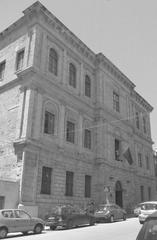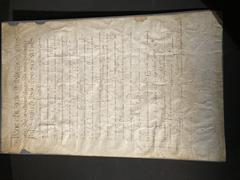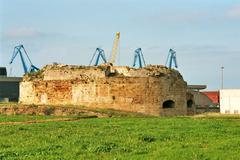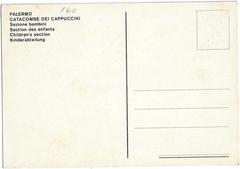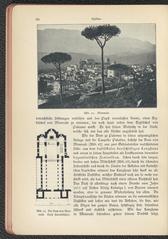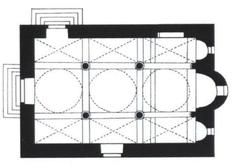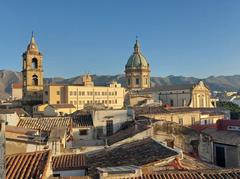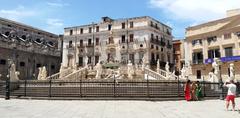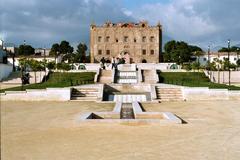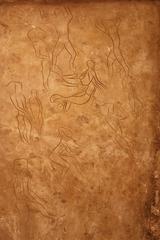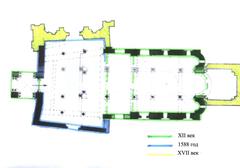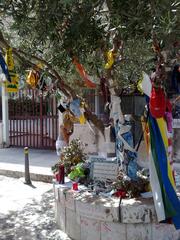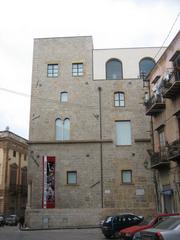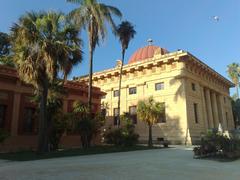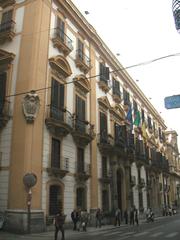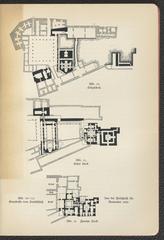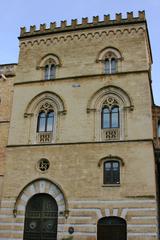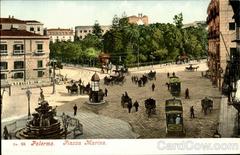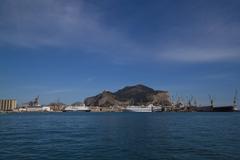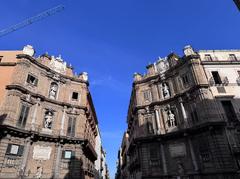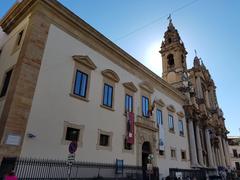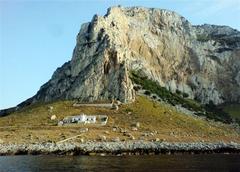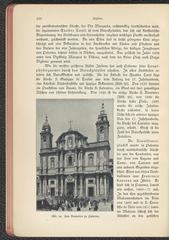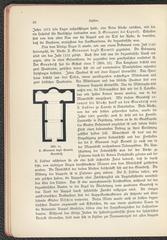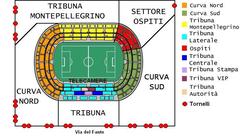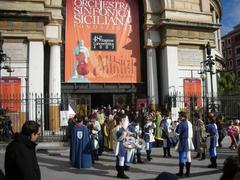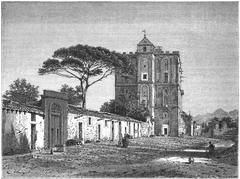Museum Of Palenteology And Geology Gaetano Giorgio Gemmellaro
Museum of Paleontology and Geology Gaetano Giorgio Gemmellaro: Visiting Hours, Tickets, and Comprehensive Visitor Guide
Date: 04/07/2025
Introduction
Located in the heart of Palermo, Italy, the Museum of Paleontology and Geology Gaetano Giorgio Gemmellaro stands as a testament to Sicily’s fascinating geological and paleontological legacy. Founded in 1866 by the pioneering scientist Gaetano Giorgio Gemmellaro, the museum has grown to become one of the Mediterranean’s most significant scientific institutions. Its renowned collections of fossils, minerals, and geological specimens not only chart millions of years of Earth’s history, but also celebrate the scientific advancements that have shaped our understanding of the Mediterranean basin. Whether you are a science enthusiast, history buff, or curious traveler, the museum offers an engaging, educational experience and serves as a key hub within Palermo’s rich tapestry of historical sites.
For up-to-date visitor information, always check the official museum website or trusted travel resources (Società Geologica Italiana, bnbdolcevita.com).
1. Historical Background and Significance
Origins and Founder
The museum was established amidst a period of scientific renaissance in Italy by Gaetano Giorgio Gemmellaro, an acclaimed geologist and paleontologist from Catania. Initially trained in medicine, Gemmellaro quickly shifted his focus to natural sciences, making groundbreaking contributions to Sicilian geology—including the study of Mount Etna’s volcanic formations and the discovery of ancient fossil beds in the Sosio river valley. In 1866, he founded the first university collection dedicated to geology and paleontology in Sicily, aiming to foster scientific research and education (Società Geologica Italiana).
Scientific and Cultural Impact
Gemmellaro’s vision extended far beyond collecting specimens. As a university professor, rector, and president of the Italian Geological Society, he played a central role in advancing geological sciences in Italy. The museum’s collections have been instrumental in studies of Mediterranean stratigraphy, evolutionary biology, and paleobiogeography, drawing international scholarly attention (Wikipedia).
2. Practical Visitor Information
Location and Getting There
- Address: Via Archirafi 22 (or Corso Tukory 131), 90134 Palermo, Italy
- Proximity: A short walk from Palermo Centrale train station and well-connected by city buses.
- Parking: Limited street parking and nearby paid garages.
- Nearby Attractions: Palermo Cathedral, Norman Palace, Botanical Garden, and more (Enjoy Sicilia).
Visiting Hours
Typical operating hours:
- Tuesday to Sunday: 9:00 AM – 5:00/6:00 PM (varies slightly by season)
- Closed: Mondays and public holidays
Note: Seasonal changes or special closures may apply. Always verify on the official website.
Ticket Prices
- Adults: €5–€6
- Reduced (students, seniors): €3
- Children under 6: Free
- Special rates: University of Palermo students/staff and during cultural heritage days
Tickets are available onsite and, in some cases, online (WhichMuseum).
Accessibility and Facilities
- Wheelchair Access: Ramps, elevators (limited in some historic areas), accessible restrooms
- Seating: Benches throughout exhibition halls
- Restrooms: Available within the museum
- Photography: Non-flash photography generally permitted; verify with staff
- Cloakroom: Limited storage for large bags
3. Museum Layout and Collections
Overview
Housed in a neoclassical 19th-century building, the museum spans two main floors and several specialized rooms, offering approximately 1,500 square meters of exhibition space (Museo Gemmellaro - Università di Palermo).
Floor Plan
- Ground Floor: Reception, introduction to Sicilian geology, and the museum’s founding.
- First Floor: Thematic halls for paleontology, geology, and mineralogy; the Gemmellaro Room; spaces for temporary exhibitions and educational workshops.
Main Exhibition Halls
- Paleontology Hall: Fossils of marine life (ammonites, trilobites), Pleistocene mammals (notably dwarf elephants and hippopotamuses), and prehistoric human remains.
- Geology and Mineralogy Hall: Dioramas of tectonic activity, stratigraphic samples, over 2,000 mineral specimens (notably sulfur, gypsum, halite), and volcanic displays from Mount Etna.
- The Gemmellaro Room: Preserves the founder’s original study, instruments, and archives.
- Educational Spaces: Hands-on children’s discovery area, fossil prep lab, and interactive/virtual reality installations.
4. Notable Specimens and Special Exhibits
- Pleistocene Dwarf Elephants: Complete skeletons of Palaeoloxodon falconeri, unique to Sicily and emblematic of insular evolution (Palaeoloxodon falconeri - Wikipedia).
- Hippopotamus Remains: Fossils highlighting ancient Sicilian megafauna.
- Prehistoric Human Finds: Including the ancient skeleton from Grotta San Teodoro.
- Sicilian Amber: Pieces containing prehistoric insects and plants.
- Volcanology and Earthquakes: Mount Etna samples, seismographs, and interactive seismic activity maps (INGV).
- Fossil Fish and Marine Reptiles: Rare Ichthyosaurus skeleton, fossilized sharks, and turtles.
- Mineralogical Collections: Sulfur crystals, gypsum “roses,” meteorite fragments, and more.
5. Educational and Cultural Programs
- Guided Tours: Available in multiple languages by advance booking; led by expert staff.
- Workshops & School Programs: Activities for children, students, and families to foster scientific literacy (bnbdolcevita.com).
- Temporary Exhibitions: Rotating displays on paleontology, geology, and Sicilian mining history.
- Community Engagement: Collaborations with international institutions and active participation in research and conservation.
6. Visitor Tips
- Language: Most signage is in Italian; consider a translation app or guided tour for English explanations.
- Best Times to Visit: Weekday mornings for a quieter experience.
- Duration: Allocate 1.5–2 hours; enthusiasts may wish to stay longer.
- Family Suitability: Best for older children and adults; limited interactive exhibits for very young kids.
- Accessibility: Some areas may have limited elevator access due to the historic structure—contact the museum in advance if concerned.
7. Nearby Palermo Attractions
- Palermo Cathedral
- Norman Palace
- Botanical Garden
- Regional Archaeological Museum Antonio Salinas
- Zisa Castle
- Palazzo Chiaramonte Steri
- Ballarò Market
All are within walking distance or a short ride from the museum, allowing for a full day of cultural exploration (WhichMuseum).
8. Frequently Asked Questions (FAQ)
Q: What are the museum’s opening hours?
A: Typically Tuesday to Sunday, 9:00 AM to 5:00/6:00 PM. Closed Mondays and public holidays.
Q: How much are tickets?
A: Standard adult tickets €5–€6; reduced €3; children under 6 free.
Q: Is the museum wheelchair accessible?
A: Most areas are accessible, but some historic sections may have limitations.
Q: Are guided tours available?
A: Yes, book in advance via phone or email.
Q: Can I take photographs?
A: Yes, non-flash photography is generally permitted.
Q: Where can I book tickets or find the latest info?
A: Visit the official museum website.
9. Planning Your Visit
To optimize your experience:
- Check the museum’s official website for updated hours, ticketing, and event schedules.
- Book guided tours ahead if you want an in-depth visit.
- Consider visiting nearby attractions to enrich your Palermo itinerary.
- Download the Audiala app for audio guides and real-time visitor tips.
- Stay connected via the museum’s social media for announcements and special events.
10. Summary
The Museum of Paleontology and Geology Gaetano Giorgio Gemmellaro is an essential Palermo historical site, offering an immersive journey through Sicily’s geological and evolutionary story. Its diverse collections—from fossilized dwarf elephants to volcanic minerals—underscore both the scientific heritage of its founder and the broader natural history of the Mediterranean. With accessible facilities, educational programs, and a central location, the museum caters to a wide range of visitors. Whether you seek scientific discovery, cultural enrichment, or family exploration, your visit to the Gemmellaro Museum promises to be both memorable and enlightening.
References and External Links
- Museum of Paleontology and Geology Gaetano Giorgio Gemmellaro, University of Palermo
- Gaetano Giorgio Gemmellaro Biography, Società Geologica Italiana
- Gemmellaro Museum Palermo, bnbdolcevita.com
- Visiting the Museum of Paleontology and Geology Gaetano Giorgio Gemmellaro, WhichMuseum
- Enjoy Sicilia – Official Travel Portal
- Museo Gemmellaro - Paleontology Collections
- Museo Gemmellaro - Mineralogy Collections
- Palaeoloxodon falconeri - Wikipedia
- INGV - Istituto Nazionale di Geofisica e Vulcanologia
- Wonderful Italy - Gaetano Gemmellaro Geological Museum
- MetroItalia Guide
